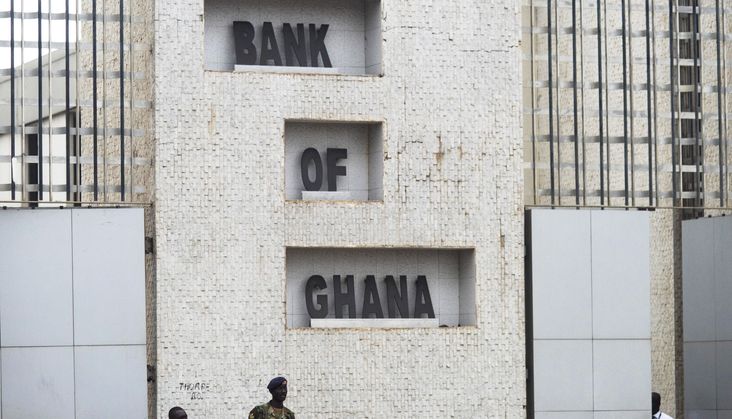Bank of Ghana sweats to impress the IMF about cedi’s woes
With less than a week to go before the third review of Ghana’s latest International Monetary Fund (IMF) program ends, the authorities are scampering to show how serious they are about the IMF program.
Two recent announcements concern the forex rate (especially for USD-GHS), a stubborn indicator that has so far defied all attempts to paint a rosy picture of the economy.
- Announcement one says that the Bank of Ghana (BoG) is updating how it calculates the “reference rate” for the country’s forex market.
A. The BoG will factor into the rate of all the forex transactions among banks and between banks & their customers (above $10,000) in Ghana. The only “improvement” in this “revamped” model, though, is that the rate will now capture transactions with a cut-off time of 3:30 pm instead of the threshold of 2 pm in the previous model.
B. Why will the BoG try to present this less-than-revolutionary change as something epic? The underlying problem is the re-emergence of Nigeria-style “parallel” FX exchange rates in Ghana. The “weighted median” or average rate published by the BoG daily, which is close to the Bloomberg one, has diverged significantly from what real people trying to buy FX on the open market often get.
C. For example, the BoG says the average USD-GHS selling rate for yesterday was ¢15.83. Yet, surveys by market research outlets show that forex bureaus were selling above ¢16.7. If one is lucky enough to get USD from a bank, the rate would have been at nearly ¢16. Fintech and card services providers quote above ¢17. Large FX market premiums of this kind are intensely disliked by the IMF because they suggest underlying inefficiency.
- Announcement two is about the BoG trying to give Ghanaians investment and savings alternatives to the dollar by pushing a gold coin product.
A. The whole scheme raises a lot of questions, especially in light of all the muck surrounding the gold refinery the government is asking the BoG to invest in.
B. Promoting bullion as an investment option to stem dollar demand is a rational decision. The question, however, is scale. A lot of investors have to be convinced. Purely from a technical analysis point of view, gold has one disadvantage compared to the dollar in Ghana’s specific case. Contrary to claims by some researchers that gold is a “zero beta” asset, it actually fluctuates against relevant indices by quite a lot. In short, it is risky.
C. The dollar on the other hand has performed very steadily against the GHS over time. Since 1994, it has always gained value. In May 2023, some lecturers at Tarkwa and Takoradi used ARIMA to forecast USD-GHS rates for 2024 and 2025 at less than ¢12.5. They got it spectacularly wrong.
D. Thus, while it looks like one can almost always count on getting both the price increase return plus the dollar return by buying gold, history actually suggests otherwise.
E. Eg: if one had bought gold in 2012 and sold it in 2015, one would have made a ~72% nominal cedi profit. But buying $ would have yielded ~140%.
F. There is also the issue of BoG simply displacing gold that it could otherwise have sold for USD in the international markets to cater to local investors. In some sense, therefore, the actual USD in circulation doesn’t really change as the BoG has to forgo the benefits of increasing its own USD reserves and focus instead on serving local investors’ appetite for a hedge against the Cedi’s notorious depreciation streak.
G. If the gold coin model does scale, it is likely to cannibalise the treasury bill market more than dollar demand given the BoG’s superior credit compared to the Govt of Ghana. It bears reminding readers that in the latest treasury bill auction, the undersubscription rate was more than 40%. It would be interesting to see how the govt would react if the gold coins thing caught on.



